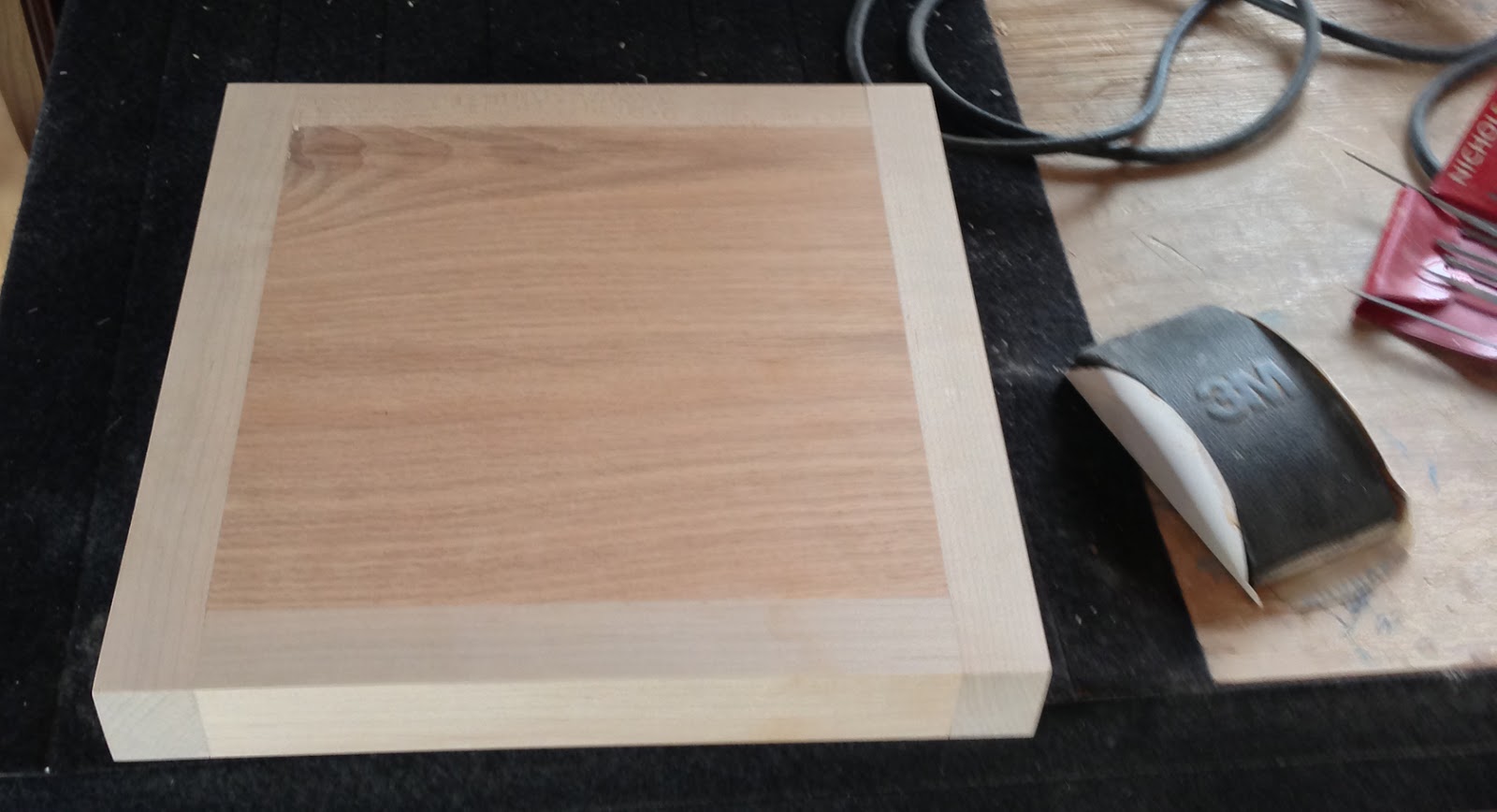More pictures and explanation after the jump.
 |
| Unfinished |
That's a picture of it while I was sanding, so it has no finish on it yet. You can see the 'natural' colors of the red oak and the hard maple nicely and compare them to the appearance of the mineral oil finish above.
Red oak is common, affordable, has a nice reddish-golden finish, and is one of the hardest woods that is readily available. Hard maple, which is something I use a lot, is also common, affordable, and hard. It's natural color is close to white and often finishes to a light tan color. These two species make for a very durable surface (um, obviously a point of emphasis on a cutting board).
Picture a board, the wide flat surface is its face grain, the edges are its edge grain, and the ends are its end grain.
That picture is from the finishing process. It doesn't have the final coat of oil yet. It does show the face grain of the oak well. The maple is turned on its edge, which means that you are looking at the edge grains of the maple.
Often, chopping blocks are made with the end grain facing up. The reason that is the case is that the most durable surface is the end grain. If I were making a surface for butchering, especially for fabricating whole chickens and the like, where a cleaver or heavy chopping action were likely to be used, then end grain surfaces are by far the better option. In this case, I don't anticipate its owner to hit it with a meat cleaver all too often, so it should be plenty durable.
 |
| A maker's mark... one day Sean Bean will say "I know this mark... That's Ficke's mark..." |
Couple things about this picture:
1. Yes, I tried carving my initials into the wood. You may think that this makes me a narcissist I will survive. My uncle described carving as "drawing with chisels." To anyone who has seen the unmitigated disaster that is my drawing, you understand the challenge. It's hard. I'm damn lucky it turned out as well as it did.
2. This picture gives you a few other good looks at the piece. First, you can compare the maple's grain to the above shot pictures. This is it's face grain. Secondly, this should give you a sense of how thick the board is. When it gets chopped up badly enough (probably years), it's a simple fix. All that's needed is some sandpaper and more mineral oil, and presto-chango: brand new(ish) cutting board.
If you have questions about it, or want to buy one, let me know. I'd be happy to talk about it, or customize one for you if you want too.
Brief update: The cutting board has been delivered. Since I'm feeling like understating things, I'll just say that it was warmly received.



No comments:
Post a Comment